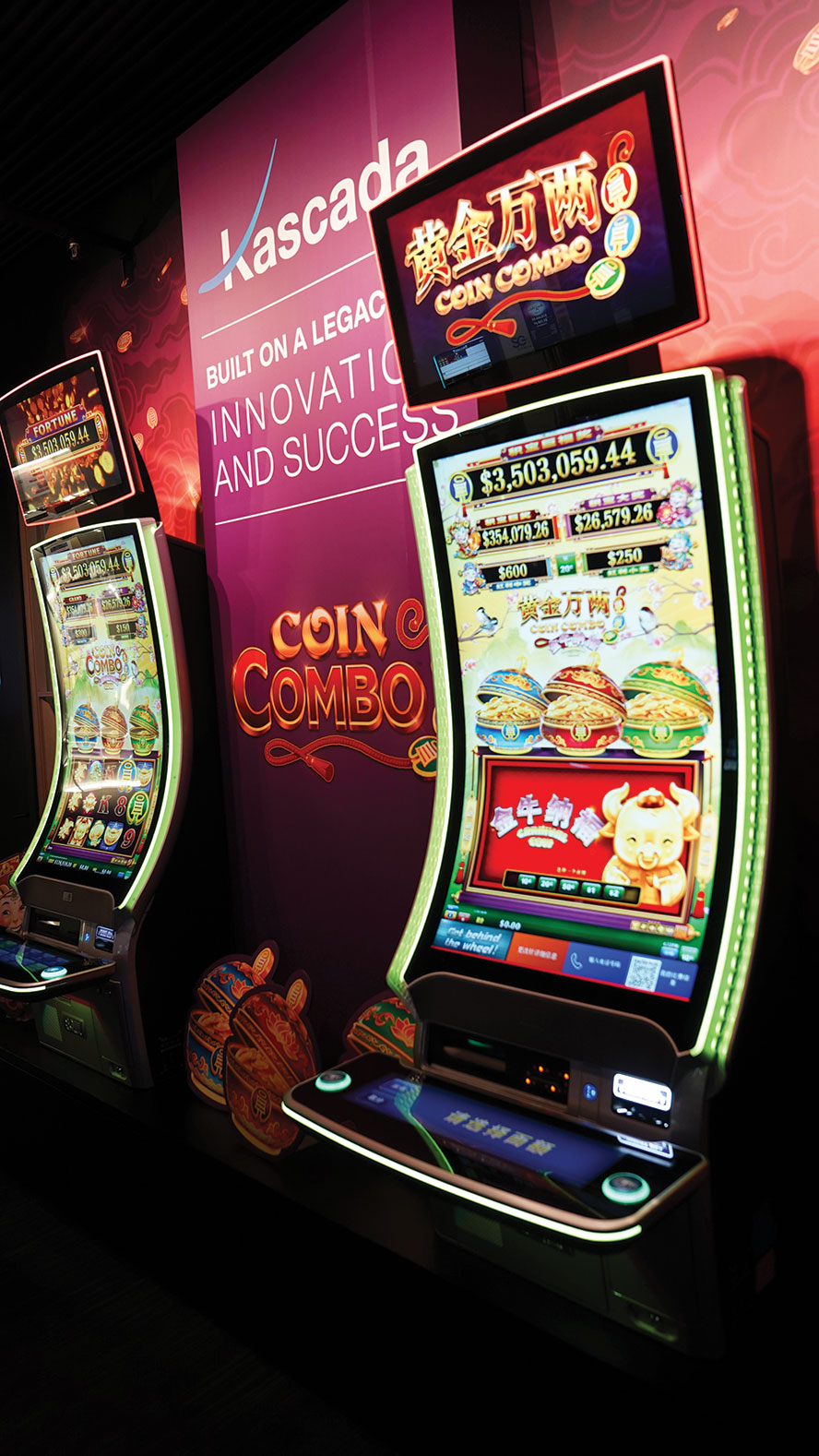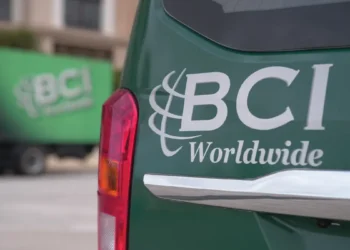In September 2021, the Macau government introduced new regulations governing the operation of electronic gaming machines within the SAR, titled EGM Technical Standards 2.0. But these new standards bring with them plenty of challenges for suppliers and operators alike. IAG takes a closer look.
 There are sweeping changes coming to Macau’s casino floors, but they are not due to COVID nor will they be easily recognizable to the naked eye.
There are sweeping changes coming to Macau’s casino floors, but they are not due to COVID nor will they be easily recognizable to the naked eye.
In September last year, Macau’s gaming regulator, the Gaming Inspection and Coordination Bureau (DICJ), activated EGM Technical Standards 2.0 which updated the technical requirements governing the operation of electronic gaming machines in the SAR. The first update since EGM (Electronic Gaming Machines) Technical Standards 1.1 was released in 2014, 2.0 builds on previous versions by providing a raft of new guidelines around EGMs with a specific focus on game integrity and responsible gaming initiatives.
In response to a query from IAG, the DICJ explained that, “The current Macau Slot Machine Technical Standards (Version 1.1) have been in effect for more than six years from 2014 to 2021.
“In response to the development of technology and the increased regulatory requirements for gaming machines, the above technical standards need to be updated with the times.”
 Furthermore, the actual EGM Technical Standards 2.0 document states that the intent of the updated standards is to ensure that gaming on EGMs occurs in a manner that is fair, secure, reliable and auditable but also makes it clear that the DICJ is not intending to mandate how changes are made, limit the application of technology, limit creativity or marketability, or advantage any one supplier over any other.
Furthermore, the actual EGM Technical Standards 2.0 document states that the intent of the updated standards is to ensure that gaming on EGMs occurs in a manner that is fair, secure, reliable and auditable but also makes it clear that the DICJ is not intending to mandate how changes are made, limit the application of technology, limit creativity or marketability, or advantage any one supplier over any other.
Instead, 2.0 specifies “what the minimum technical requirements for EGMs are instead of how the requirements should be met and is not intended to mandate a particular solution or method as the means to realize the requirement.”
EGM Technical Standards 2.0 incorporate three key dates by which certain milestones must be met by the suppliers who develop games and the operators who offer them to players.
The first of those arrives on 31 December 2022 at which time suppliers must be fully compliant with the new rules.
That is, any games submitted to the DICJ for approval after this year must adhere to all requirements under 2.0.
The second date is 31 December 2023 at which time all casino floors in Macau must include at least 40% of EGMs which are fully compliant to 2.0. By midday on 31 December 2024, all EGMs operating in Macau must comply with the new standards, and machines that aren’t will be required to be switched off and withdrawn from operation.
 Concessionaires will also be required to submit an annual report to the DICJ, starting at the end of 2022, detailing their progress in converting to a 2.0-compliant gaming floor.
Concessionaires will also be required to submit an annual report to the DICJ, starting at the end of 2022, detailing their progress in converting to a 2.0-compliant gaming floor.
Documents compiled by a major supplier to the Macau market and seen by Inside Asian Gaming identified 142 new additions to EGM Technical Standards 2.0 across 13 main categories, such as Program Storage Devices, Hardware, Random Number Generator, Meters, Game Play and Display of Time.
There are also new obligations for all EGMs to be permanently connected to a central monitoring system – those which lose connection must be automatically suspended – and to incorporate Display Audit Devices which capture and store the video history of all games played, allowing for full verification of game play history in the case of player disputes.
However, suppliers have identified five key areas they say will lead to a significant commitment of resources on both platform and game reworks.
These are:
- The time should be displayed in the bottom right corner of each screen (including flashing).
- Game outcomes should be determined using Cryptographic RNG only.
- The game should be disabled if it loses communication with the host.
- EGMs should display the “Max Win Value” of single pay-lines excluding scatter pays, jackpots and bonus.
- Bill, TITO, cashless and voucher deposits cannot be accepted if they would cause the credit meter to exceed the credit meter limit.
Of those five, all suppliers IAG spoke with narrowed the list down even further to two specific updates they say will require a massive investment of resources to ensure full compliance by the end of 2024: the flashing time display and the use of Cryptographic RNG.
 Under the DICJ’s EGM Technical Standards 2.0, the current local time must be displayed on the game screen and in 12-hour format whenever the machine is available for play, with a minimum size of 7mm when measured directly off the display. It should not obscure any other relevant information on the EGM and the time must be synchronized with the Central Monitoring System to within 1 minute accuracy.
Under the DICJ’s EGM Technical Standards 2.0, the current local time must be displayed on the game screen and in 12-hour format whenever the machine is available for play, with a minimum size of 7mm when measured directly off the display. It should not obscure any other relevant information on the EGM and the time must be synchronized with the Central Monitoring System to within 1 minute accuracy.
This time display must also flash at the start of a player’s session, at least every 10 minutes during the session, or every 60 seconds when either the game is not being played or a player with credit in the machine is not active, among other situations.
“The clock is something we will need to do in software, and the issue is that [the DICJ] want it to flash at certain stages,” explains Ken Jolly, Vice President and Managing Director, Asia, for Light & Wonder (formerly Scientific Games). “We’ve introduced clocks in other markets before but without the flashing requirements.”
The Cryptographic RNG is essentially a more secure and powerful Random Number Generator, making it both more accurate and harder to hack.

“When it comes to the Cryptographic RNG, some of the products in the market today are quite old and the horsepower that was built into the boards back then is not as great as what we need today,” Jolly continues. “Obviously since then graphics have improved, so boards have had to increase their horsepower.”
Exactly what this means for each supplier depends on the products they currently have in the market, with 2.0 compliance ultimately coming down to the features of each style of cabinet and the platform they use. In most instances, the newest cabinets released into Macau, such as Light & Wonder’s Kascada, Aristocrat’s MarsX or IGT’s Crystal Series are well equipped to facilitate compliance, with most of the respective companies’ new games to be released via those cabinets and under 2.0 specifications.
Others – the older cabinets in the market stretching back to before EGM Technical Standards 1.1 in 2014 – simply don’t have the power to run the latest technologies and are in line to be decommissioned, even though many of the games they host continue to perform well. These include the likes of Light & Wonder’s Equinox and Aristocrat’s Viridian cabinets, both more than 10 years old.
Sitting right in the middle, however, are cabinets such as Light & Wonder’s Dualos and DualosX, which Jolly says can and will be upgraded. It is which games will be reworked to match that remains the million-dollar question.
 As another supplier explained, upgrading older games to be 2.0 compliant is akin to open heart surgery.
As another supplier explained, upgrading older games to be 2.0 compliant is akin to open heart surgery.
“It’s effectively building a new game,” they said. “It’s like renovating a house compared with building a new house – it can often be the same effort and time. So the big decision everyone has to make is how many games to redo and at what opportunity cost, because we only have so many resources to devote to game development for the region.”
Most suppliers IAG contacted regarding EGM Technical Standards 2.0 were reluctant to comment, however IGT’s Sales Director for Asia, Michael Cheers, said the company “will look to implement the new Macau 2.0 standards prior to the required date.”
Cheers also revealed that IGT “has allocated a task force to handle the transition, which is well underway in terms of development. IGT has a target date for the first 2.0 approvals by Q4 this year and is committed to investigate the market needs to ascertain what content is required to be upgraded to Macau 2.0 standards based on market demand.
 “We are working with our key partners to implement the new standards prior to the required date and for them to be deployed on the gaming floors for inspections. This will not impact our delivery timing of products on our current product roadmap for Macau.”
“We are working with our key partners to implement the new standards prior to the required date and for them to be deployed on the gaming floors for inspections. This will not impact our delivery timing of products on our current product roadmap for Macau.”
Aristocrat, the market leader in Macau with around 7,500 units installed, said it will substantially reduce the number of games it has in the market although this is likely to only impact around 10% of its installed machine base.
Light & Wonder, with around 4,500 units installed, recently received compliance approval from the DICJ for “Carnival Cow” – the first game to meet EGM Technical Standards 2.0 – and says all new games submitted for approval from now on will be 2.0 compliant. It is also planning to submit popular titles from the Duo Fu Duo Cai and Jin Ji Bao Xi game families for approval during the June quarter, which will be for its already installed Dualos and DualosX cabinets in Macau.
“We identified that customers probably weren’t going to want to have Version 1.1 products that required a commitment to conversion later on, because it takes time to put a conversion on the floor or to put a new machine in,” Jolly explained.
“They would want to go forward with version 2.0 straight away, so we very quickly got into action in our own R&D house, got to understand the new specs and did the first new game on the Kascada cabinet, which is ‘Carnival Cow’. It didn’t make any sense to launch it under the previous version.”
 For the operators themselves, the challenge of 2.0 is the planning. Phasing older games out and replacing them with newer, compliant models will come down to their internal capex cycles – replacing games inevitably comes at a cost – while also factoring in how games are performing in the here and now. For example, phasing out underperforming games as part of the 40% requirement by the end of 2023 is a relatively easy transition, but older games that continue to perform well will likely stay operational on the floor until the latest date possible in 2024.
For the operators themselves, the challenge of 2.0 is the planning. Phasing older games out and replacing them with newer, compliant models will come down to their internal capex cycles – replacing games inevitably comes at a cost – while also factoring in how games are performing in the here and now. For example, phasing out underperforming games as part of the 40% requirement by the end of 2023 is a relatively easy transition, but older games that continue to perform well will likely stay operational on the floor until the latest date possible in 2024.
Operators contacted by IAG did not respond to our requests for comment.
According to Jolly, Macau’s approach in implementing EGM Tech Standards 2.0 is unique in that it is one of the very few jurisdictions requiring all machines on the casino floor to match the latest standards rather than just those introduced from September 2021 onwards – when 2.0 was officially launched.
 “This idea of keeping only new products on the floors is not a bad approach, and to do that they obviously need to make it mandatory that by a certain time all products must be upgraded,” he says.
“This idea of keeping only new products on the floors is not a bad approach, and to do that they obviously need to make it mandatory that by a certain time all products must be upgraded,” he says.
“In other markets where they bring in new standards but don’t have a requirement for the latest, greatest technology, they don’t make it retrospective … it is only for products from a particular date.
“At the end of the day, that just comes down to the individual regulator.”






























